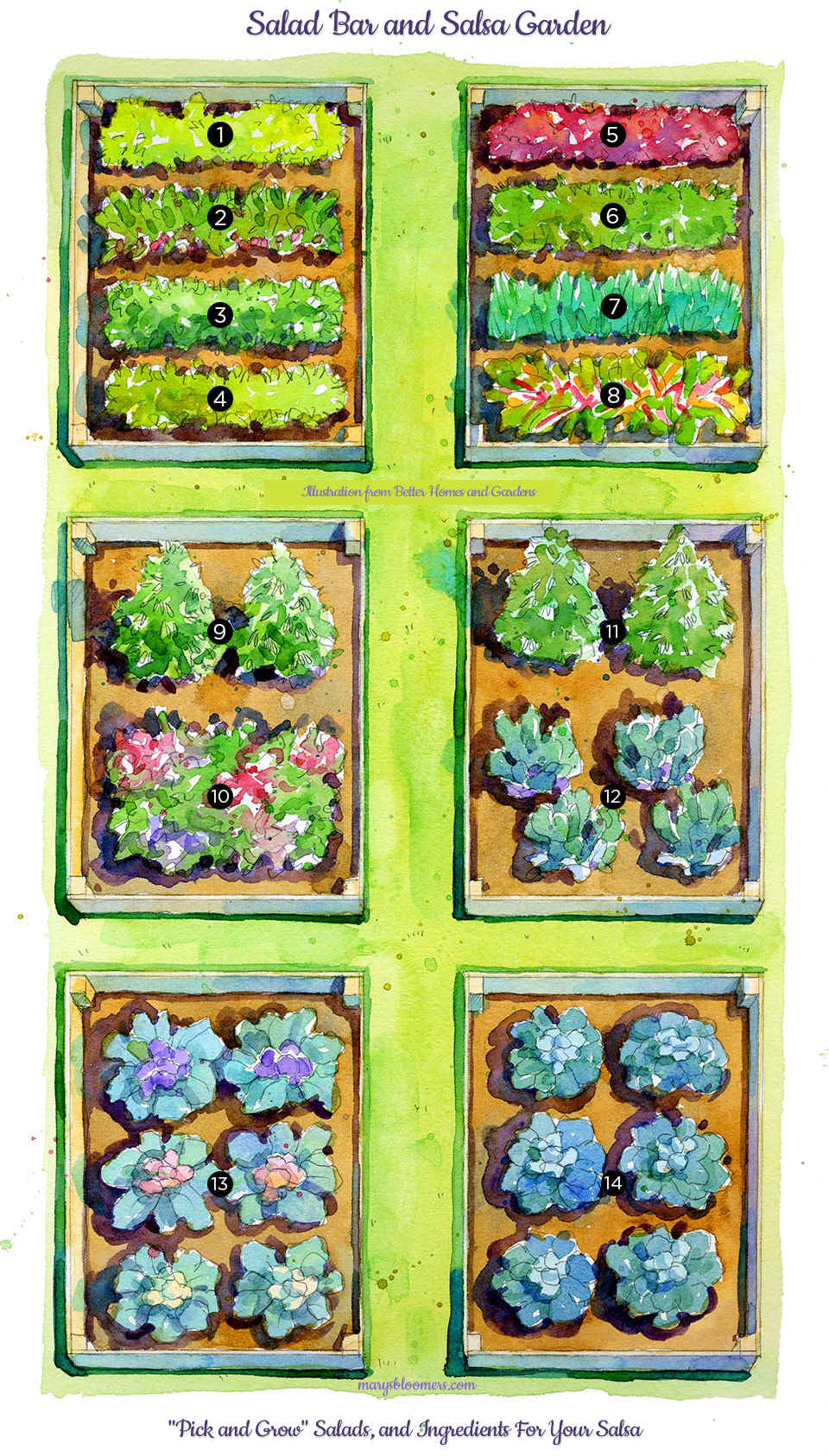|
|
|
A design for a greens garden that would
be surrounded by potted tomatoes, hot and sweet peppers. Add anything
that you like in your salsa to a cluster of big potted plants around
this layout.
It's basically a garden that you'll be able to regularly harvest from, and the plants will continue to produce more leaves for you. It's a Pick and Grow method for those of us who enjoy several salads a week. Planting this design in raised, elevated cedar garden beds make the garden compact, and there's No Bending to pick or weed. This In-ground design is 13 feet
x 8 feet Follow instructions that come with your plants for the spacing needed for the plants you choose. Feel free to substitute these plants with salad plants you love. Spacing is shown here according to the vegetables suggested. You'll have more or less room, depending on the type and size of the plants. #13 and 14 don't have to be cauliflower and broccoli. They can be beds filled with anything with edible leaves that you like in your salad. If you love cooked greens, use or add them to this design. Helpful Hint: Stick in a nasturtium or marigold plant where you have space, either within or in pots around your salad bar garden. Both of these are plants that repel or "trap" predatory insects. And they're very pretty. Nasturtium is also quite tasty in your salads. For more on companion and protective plants, here's the page to visit. Mary's Plants By Number according to the above layout:
Planting early, mid-season and late varieties of plants will assure you of a fresh-picked salad until frost. **For the salsa part of the garden, surround the salad garden with big colorful pots with ingredients you like in your homemade salsa. Plant cherry and/or plum tomatoes, oregano, cilantro, and dwarf hot and sweet peppers. These look very ornamental with the salad garden, take up less space, and are easier to care for and harvest than planting in the ground. They can also be moved elsewhere - they're portable. Greens and herbs in the salad bar garden that perform very well If you like ethnic culinary delights in your salads, look for those specialty plants for your garden, and add them, as well. Mixing greens that can be eaten fresh with those that can also be used in cooked dishes, expands your edible gardening horizons.
The plants in the salad garden thrive best in moist, well-drained, nutrient-rich soil and in full sun. Fertilize with a natural, non-chemical liquid fertilizer like fish emulsion every two weeks, or sprinkle epsom salts once a month. These fertilizers are non-toxic and can be used on food up until your day of harvest. These fertilizers assure you of fast growth of new leaves. Once the plants are in the ground, water them every other day for the first two weeks. Then make sure the garden gets around an inch of water a week. When leaves on the greens for your salads have reached 3-6" in length, it's time to harvest them. They'll be tasty, and without any bitterness. The younger, the sweeter. Let the plants that you wish to get full size grow. Pick baby carrots and root vegetables while young or allow dwarfs to reach their full size for harvesting. Once
you harvest leaves for your salad, make sure you re-water the plants you
harvested from. Chives and scallions love to be cut. They replenish leaves quickly. These are perennials, so you'll see them again after winter. Tip: If you grow organically, and spot baby dandelions in the spring, pick the young leaves from the plant, and pop them into your salads. The leaves are sweet and tasty when young. Before the leaves get large and before it flowers. I do that every spring before yanking them out for good. If you like bitter greens, you can pick and eat the larger leaves before tossing the "weed". If you use chemicals on or around the dandelions, do not eat them. |
||||
|
Recommended
reading and cool gardening stuff Raised
Bed Planters
and Growing Supplies
|




















